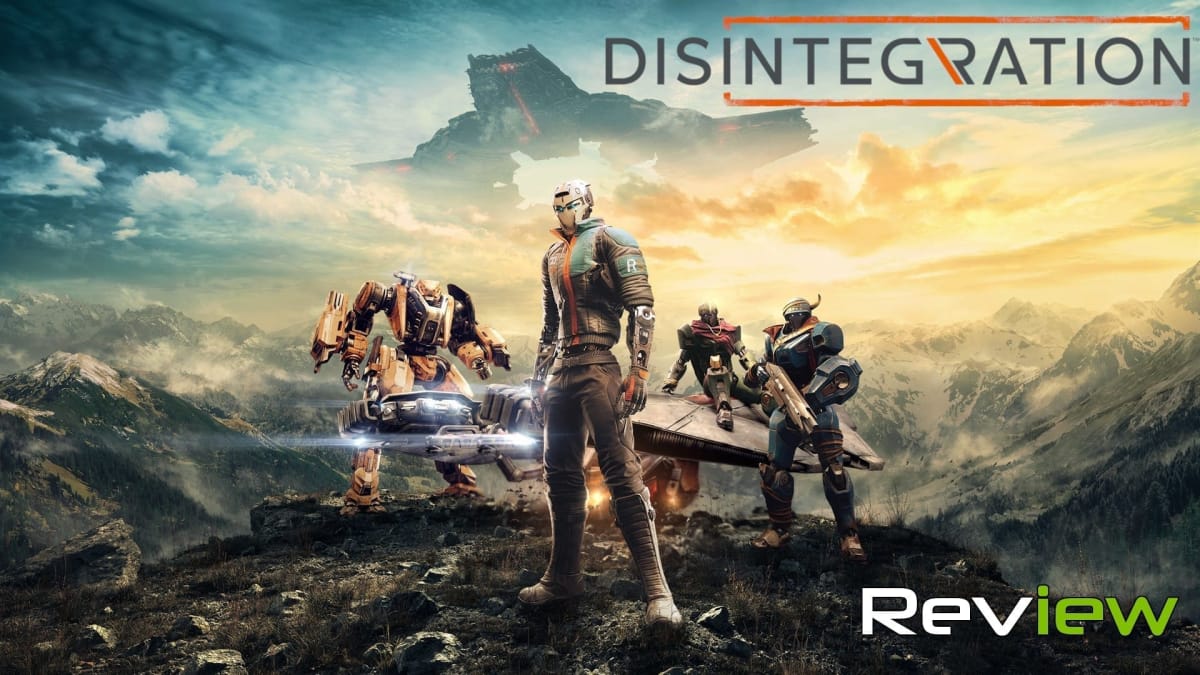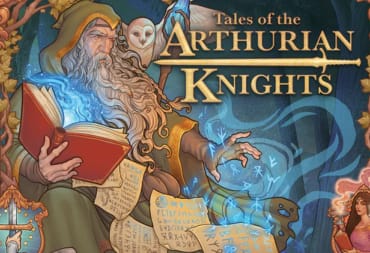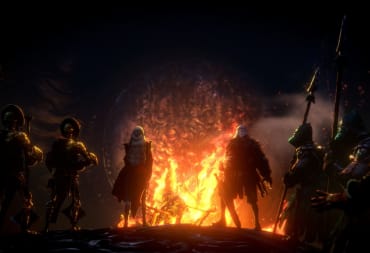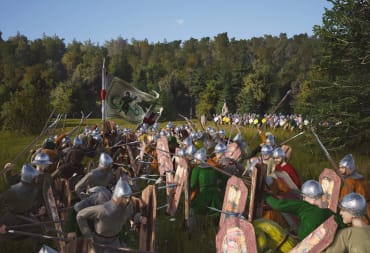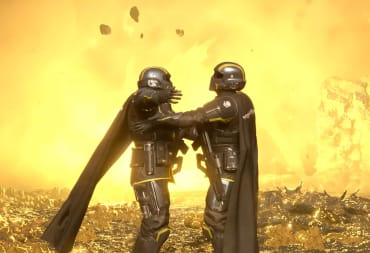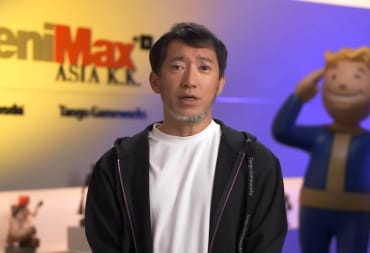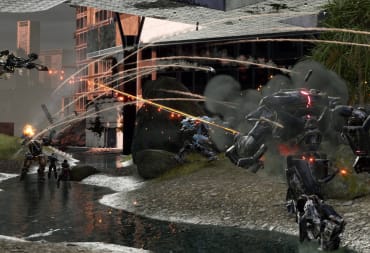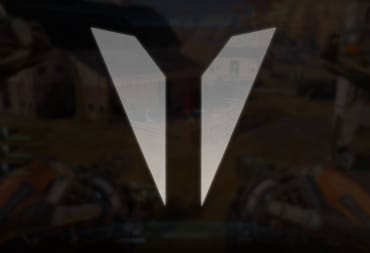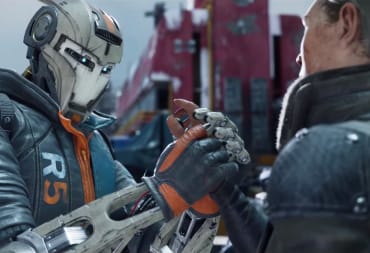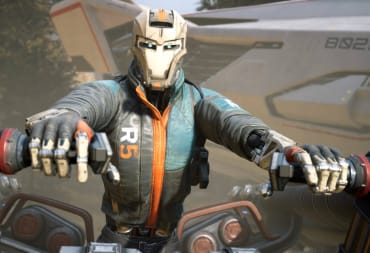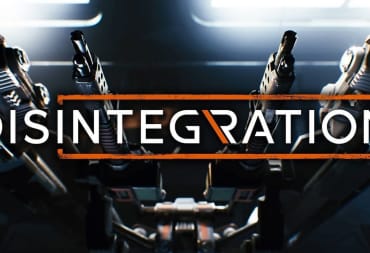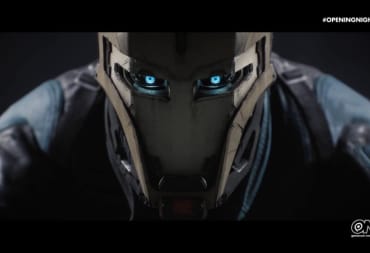Private Division, Take-Two Interactive's prestige indie gaming label, was founded as a way to promote fresh ideas and original worlds. Disintegration, the innovative shooter from the mind of the ex-Bungie developers at V1 Interactive, offers a novel idea indeed. It isn't the slick combination of first-person shooting and RTS squad management. It isn't the unique way that the developers fit all those gameplay possibilities onto a single gamepad. It's not even a well-realized future world full of robotic men and hoverbikes. The most novel idea that Disintegration presents is that a lengthy single-player shooter campaign with a deathmatch addition works in 2020. It's certainly an idea I can get behind.
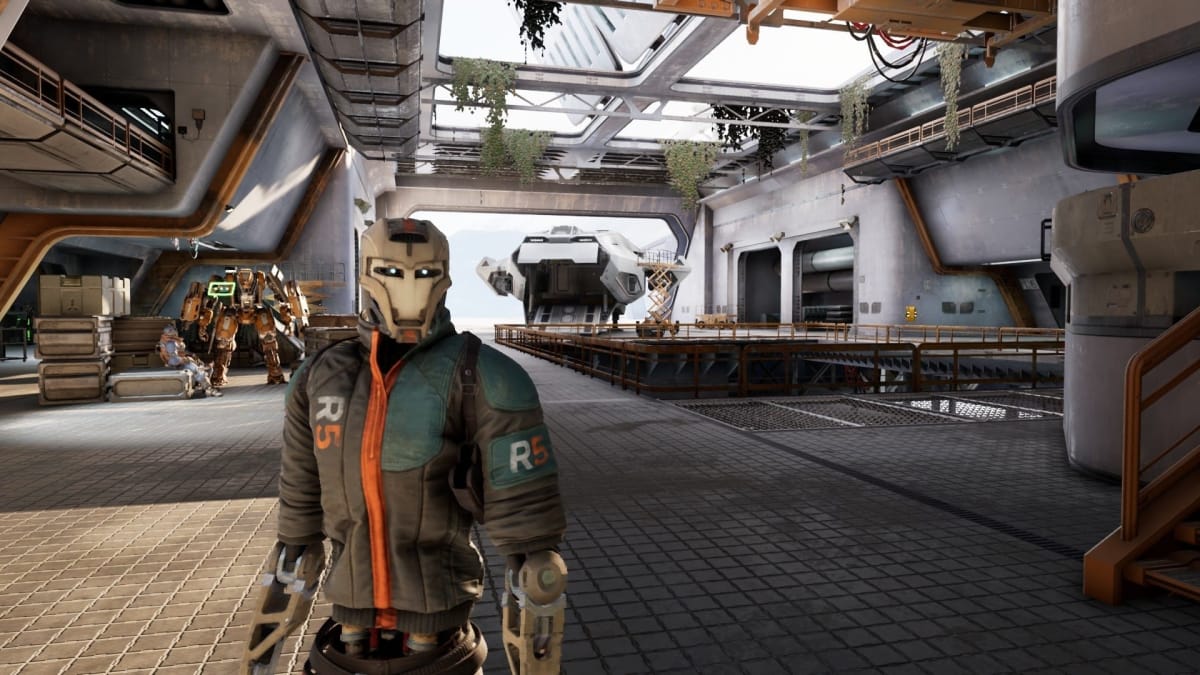
What is Disintegration's Story All About?
You play as Romer Shoal, a formerly famous Gravbike pilot who has "integrated", or put his human brain into a robotic shell. The campaign's start finds him captured and about to meet his manufacturer when a conveniently timed prison break facilitates his escape. Romer joins in with a ragtag group of rebels to fight back against an impressive global army hellbent on the end of natural humanity. Within the first ten minutes, you'll be mounted on an armed bike with a few robot friends to order around and a multitude of red-eyed enemies to take down.
The story sticks to the beats you might expect from that set up a little too closely for my liking, but it works for what it is. Maybe that's part of my problem. The developers went through so much effort to create a unique world filled with new slang and interesting history, but they didn't inject enough of that lore into the missions. Instead of serving to move the story forward, cutscenes usually just establish a new setting.
There aren't any museum walkthroughs or amnesiac characters to spout exposition at either, which is simultaneously a breath of fresh air and a big problem. Only the added resources of the Steam store page and a reviewer's guide gave me close to a full picture of what was really going on. Most players aren't going to go through that rigamarole, so it's a shame they're going to miss out on the big picture.
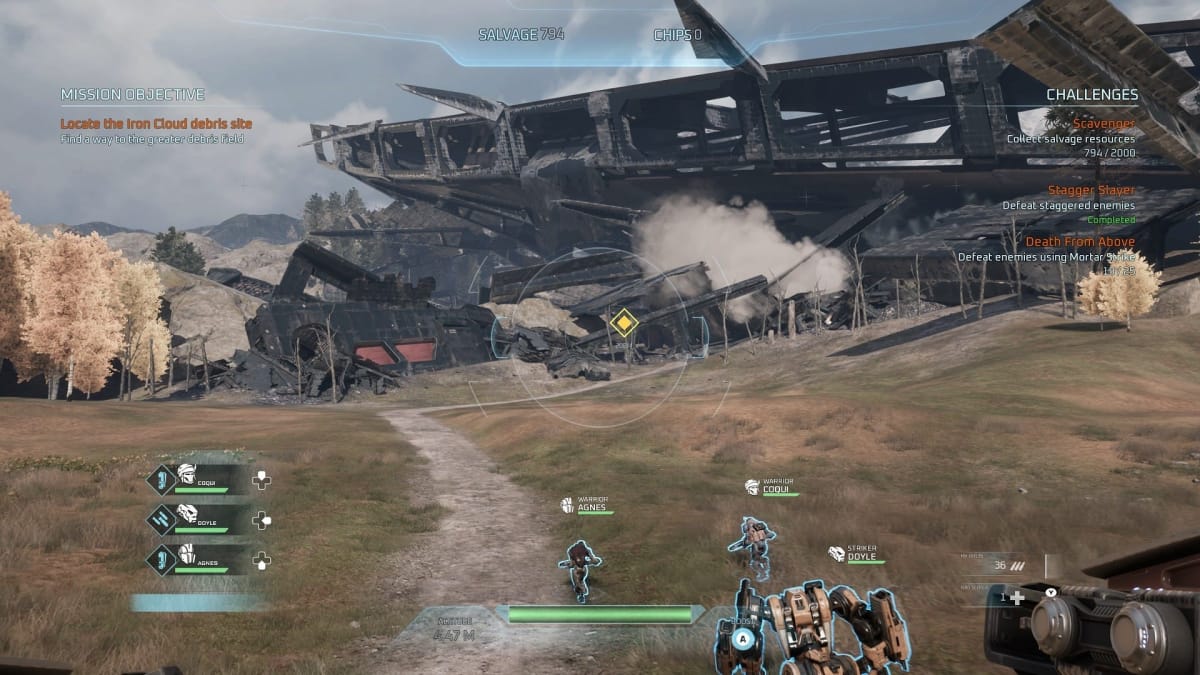
What the campaign lacks in lore and minute polish, it makes up for in character building. Even when limited to mid-mission dialogue and action movie quips, you get a good feel for each member of the crew as you play. The voice acting is mostly spot-on, with 95% of the cast featuring diverse accents and compelling inflections. Considering that most of the characters are robots with static faces, this is really important to nail, and the cast does just that. The one exception is Wagoner, a crusty mentor for your crew voiced by actor Hal Williams. The TV veteran does his best, but his distinct voice and line delivery stick out like a sore thumb.
Now, having said all that, I understand why those problems exist. The fact that V1 Interactive managed to craft such a world in the first place is an achievement considering their small size. This really feels like a big-budget release from the height of the Xbox 360 era, and it takes a while before you notice the cut corners.
The hub areas that feel like they should accomplish more, the one endlessly recycled miniboss fight, the simplistic challenges. These issues are a huge bummer, but Disintegration still pulls through where it counts. Unlike several other single-player experiences made by infinitely larger companies, the end result is a full-length story that satisfies throughout its 12-15 hours.
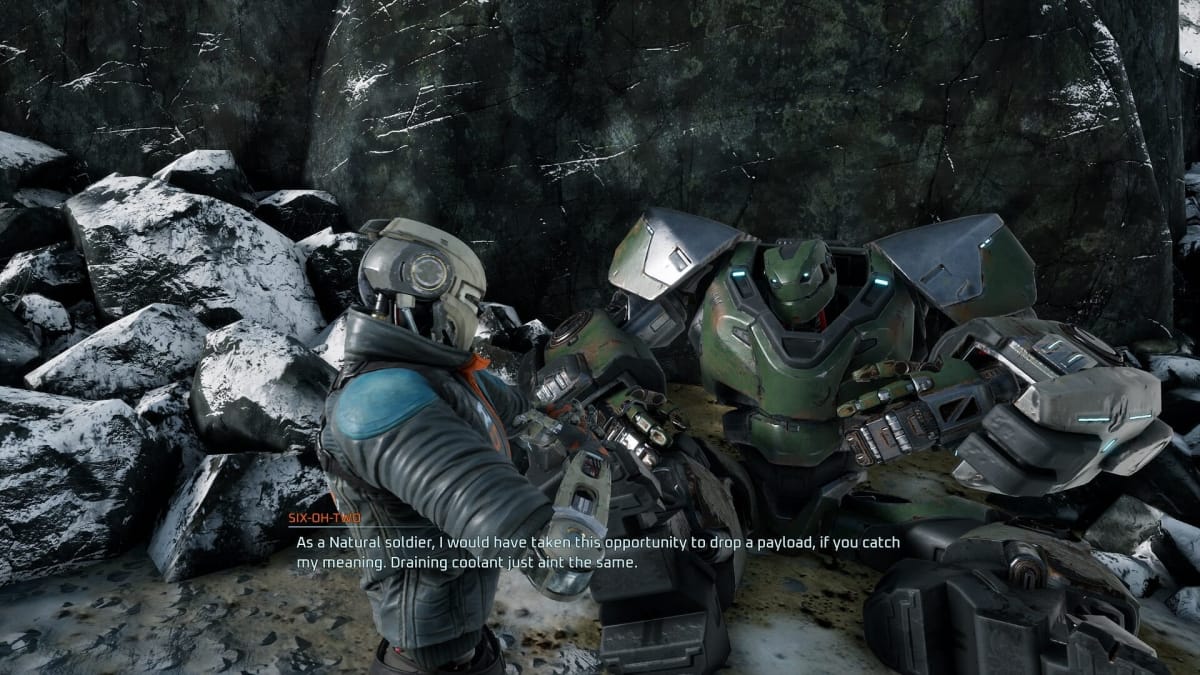
How Does Disintegration Differ from Other Shooters?
For most people, Disintegration's main hook lies in its unique gameplay, which has you piloting a hoverbike through battlefields and commanding troops. While that feels like a setup for a strategy game, it's much more akin to a squad shooter or something like Mass Effect. Romer is more than capable on his own, especially on the lower difficulties, and your crew isn't too shabby when it comes to taking down enemy forces. As a pilot, you can order squadmates to use abilities ranging from concussion grenades to a missile barrage. They are vital for getting past tough encounters, and it's thrilling to overwhelm enemy squadrons with your own forces.
What makes it so rewarding is that victories only come when you conquer Disintegration's smart enemy AI. Borrowing a page from the Halo playbook, this game has enemies that hide behind cover, lie in wait around corners, and flank opposing forces. They'll run away from tough spots and heal each other when the time is right. It makes for gameplay that's tough but fair, the type of scenarios you'll be playing over and over until you master them.
This makes the checkpoint placement unfortunate since it's often before several lines of unskippable dialogue, leading to a lot of frustrating "Look at all that juice!" moments as you try to overcome the challenge. Still, if you can tough it out, you'll get a rush when you finally outsmart that pair of flying missile launchers you've been battling for an hour.
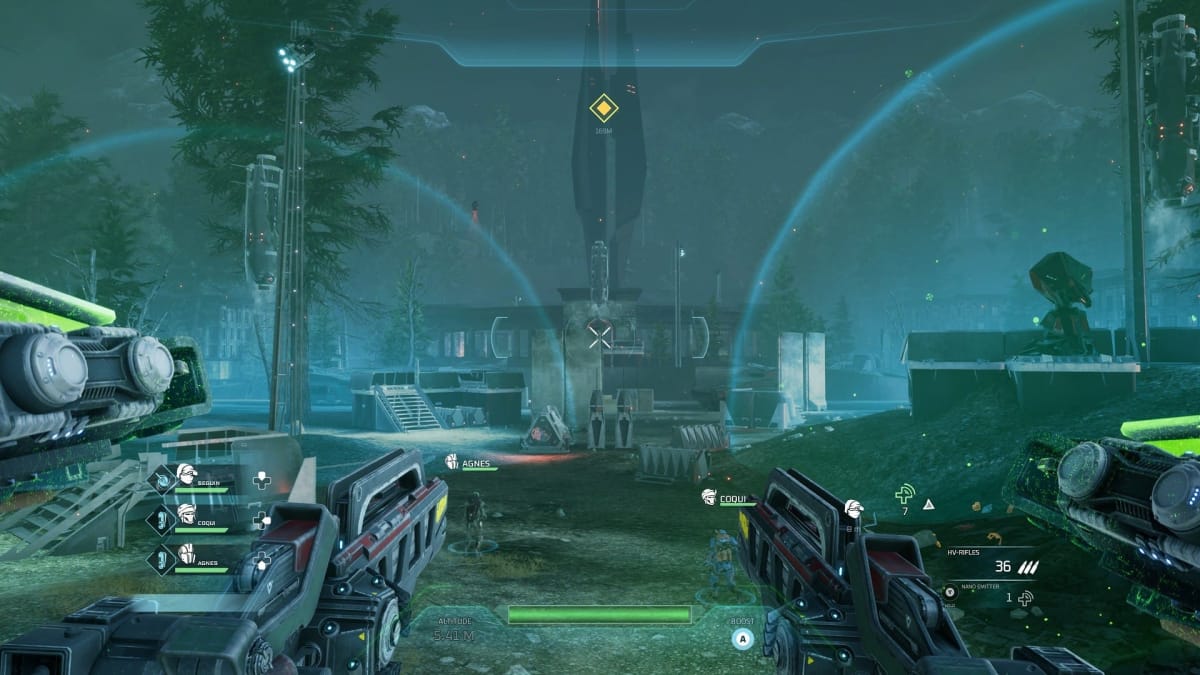
There are a few quirks to the combat worth mentioning. Campaign missions come with a preset loadout built-in, meaning that you can't swap weapons or choose who you want to bring into the fray. It makes for an occasionally monotonous playthrough since you know that you'll be firing the same set of guns for an hour at a time whenever you head into battle.
I also think the Gravcycle itself feels like a forced novelty, a lumbering hover ship that never feels as fast or nimble as it does in the cinematics. Outside of slowly jetting around, your only movement option is an unwieldy boost forward that's sometimes more trouble than its worth. Also, many missions leave you without the option to heal yourself, meaning you'll sometimes have to jet over to a healing station in the middle of tense fights.
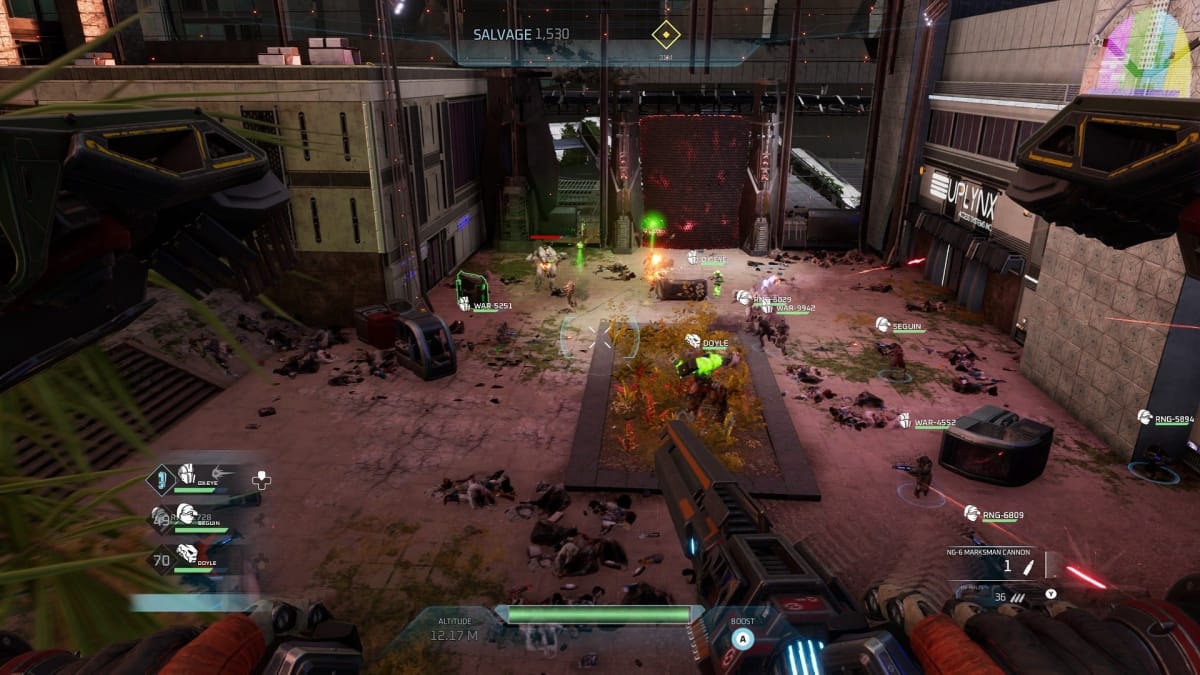
All these quirks mean that it's really important to choose your difficulty carefully, as it fundamentally changes the gameplay. When the menu states that harder difficulties require more strategic finesse, they're not joking. Instead of just pumping up enemy health or spawning in more dudes, the difficulty in Disintegration is basically asking you how much you want to crank up the RTS meter.
At the easiest "Story" difficulty, you're playing an engaging but breezy first-person shooter with the option to deploy stun grenades. On the toughest difficulty, you're hanging back and plotting out every move as your squad inches forward through enemy territory. In a way, it delivers no matter what type of game you're expecting, and I can appreciate that.
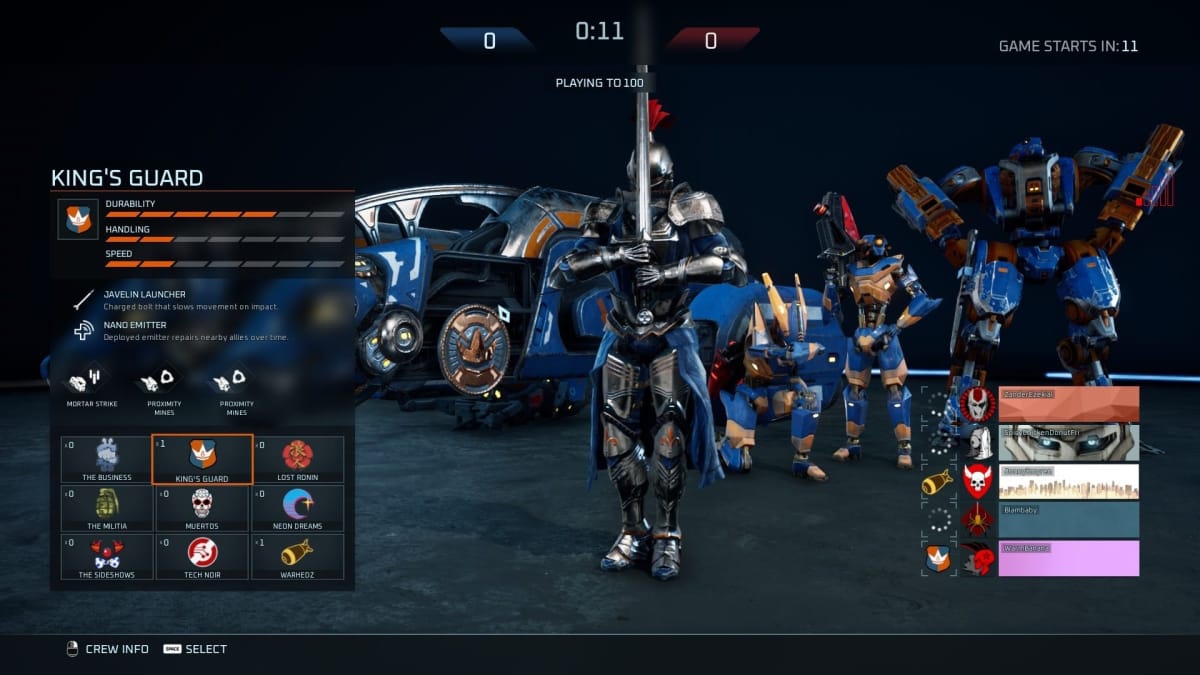
What is Disintegration's Multiplayer Component?
Speaking of meeting expectations, Disintegration's deathmatch multiplayer is fun but forgettable. You've got three modes to choose from, variants of Kill Confirmed, Territories, and Assault. The character classes are distant cousins of Overwatch-style heroes, with their own set loadouts of unique weapons and squadmates. The character models all wear over the top costumes, but none of that flavor really moves onto the battlefield. Much like the rest of the game, enemy units often stay at a distance, so it's hard to make out specific details. That plus the unwieldy nature of the Gravcycle itself means that the mode will make for a fun few weekends for diehard fans, but not much more.
The only truly notable thing about the multiplayer is how many exclusive weapons ended up there. Everything from deployable turrets to an electrified javelin launcher to a nuclear cannon only appears on specific multiplayer classes, which feels like a real missed opportunity. When taken as a whole, Disintegration has a varied arsenal on par with any of its contemporaries, but each weapon is so limited in how you can use it that you never get that full perspective as you play. The character class approach does work for multiplayer, but the single player's replayability suffers because of how limited your choice in armaments is.
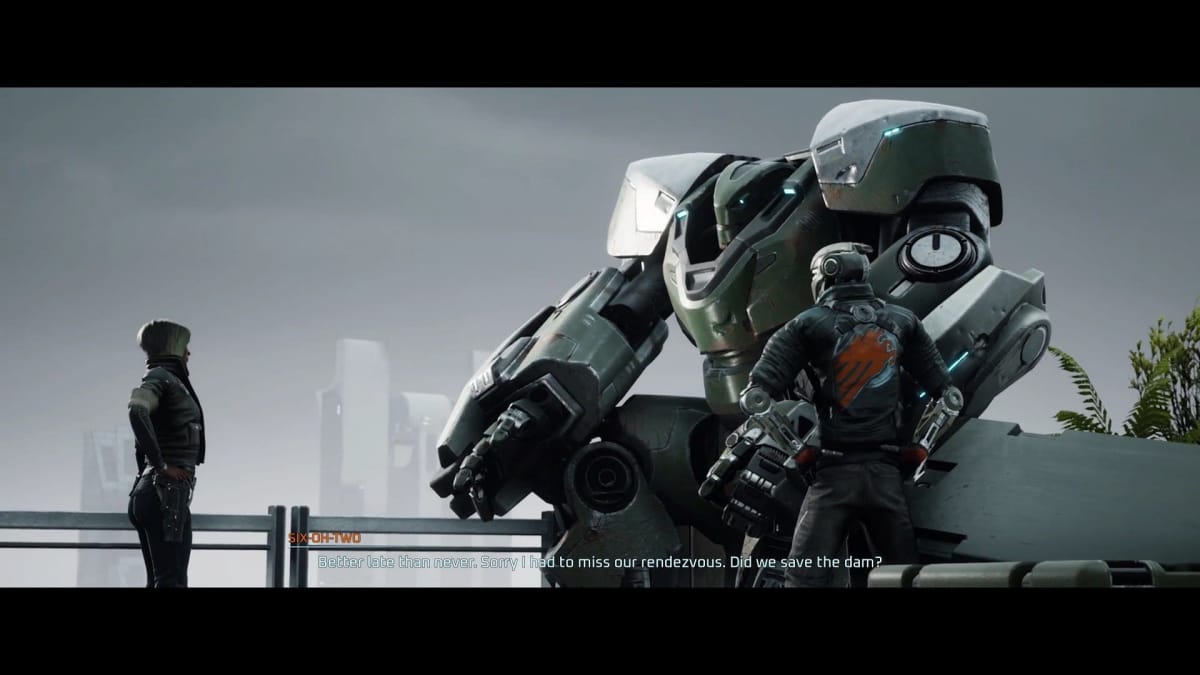
Disintegration Review | Final Thoughts
No one is going to argue that Disintegration is the next Destiny or even the next Halo. The game has heart, but there are always small problems reminding you of its limited scope. Despite that, Disintegration succeeds at presenting an AAA-style shooter the likes of which we haven't seen in a long while. It's got a meaty campaign and a unique gameplay hook that's worth digging into. Much like Titanfall before it, it's the type of solid foundation that cries out for a refined and robust sequel effort. Considering what they've done on their first time out, I'd say that V1 is up to the challenge.
TechRaptor reviewed Disintegration on Xbox One X and PC via Steam with copies provided by the publisher. The game is also available on PlayStation 4.
Review Summary
Pros
- Unique And Fascinating Sci-Fi World
- Challenging AI That's Fun To Fight
- Enjoyably Lengthy Story Campaign
Cons
- Lore Often Goes Unexplained
- Preset Loadouts Hurt Replayability
- Ho-Hum Multiplayer Suite
Have a tip, or want to point out something we missed? Leave a Comment or e-mail us at tips@techraptor.net
